Basic function principles
Measuring principle
The KL3403 works with 6 analog/digital converters for recording the current and voltage values of all 3 phases. The values are sampled with a time grid of approximately 16 µs.
Recording and processing is synchronous and identical for the 3 phases. The signal processing for one phase is described below. This description applies correspondingly for all 3 phases. The total power and the total energy consumption represent the sum of the 3 phases, the mean current represents the average.
Voltage u and current i curves
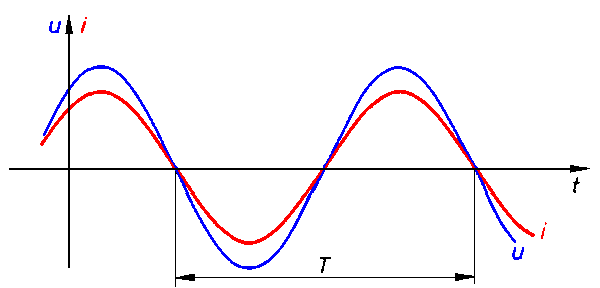
RMS value calculation
The rms value for voltage and current is calculated over a measuring interval, in this case the period T. The following equations are used:


u(t): instantaneous voltage value
i(t): instantaneous current value
n: number of measured values
For a measurement in a 50 Hz mains system (period T = 20 ms), 1280 measured values are considered within a calculation.
Measuring interval
The choice of the right measuring interval is important for the quality of the measurement. The measuring interval must be at least ¼ T. ¼ T, ½ T, T end multiples of ½ T are sensible values. If a random interval is used that does not correspond to a multiple of ½ T and is significantly less than 5 T, the measured value will fluctuate significantly.
The default setting for the measuring interval is 50 ms, corresponding to 2.5 T in a 50 Hz mains system and 3 T in a 60 Hz mains system. Experience shows that this is a good compromise between measuring speed and stability. Deviations from this value are only advisable in the event of particular measurement requirements (e.g. high measuring speed, low signal frequencies or special current curves).
Power measurement
Active power measurement
The KL3403 measures the active power P according to the following equation

P: Active power
n: number of samples (64000 samples / s)
u(t): Instantaneous voltage value
i(t): instantaneous current value
Power s(t) curve
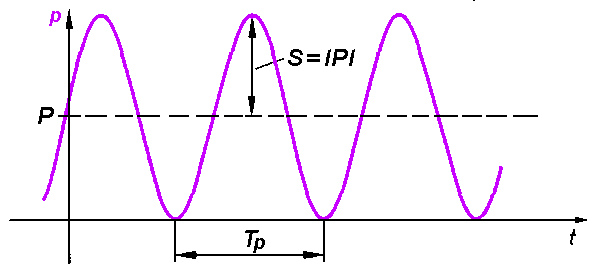
In the first step, the power s(t) is calculated at each sampling instant:

The mean value over the measuring interval is calculated. Here too, the correct choice of the intervals is important, as described in section RMS value measurement (the interval can only be changed simultaneously for U, I and P).
The power frequency is twice that of the corresponding voltages and currents.
Apparent power measurement
In real networks, not all consumers are purely ohmic. Phase shifts occur between current and voltage. This does not affect the methodology for determining the rms values of voltage and current as described above.
The situation for the active power is different: Here, the product of effective voltage and effective current is the apparent power.

The active power is smaller than the apparent power.
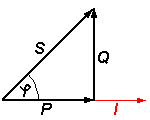
S: Apparent power
P: Active power
Q: Reactive power
φ: Phase shift angle
u(t), i(t), p(t) curves with phase shift angle φ
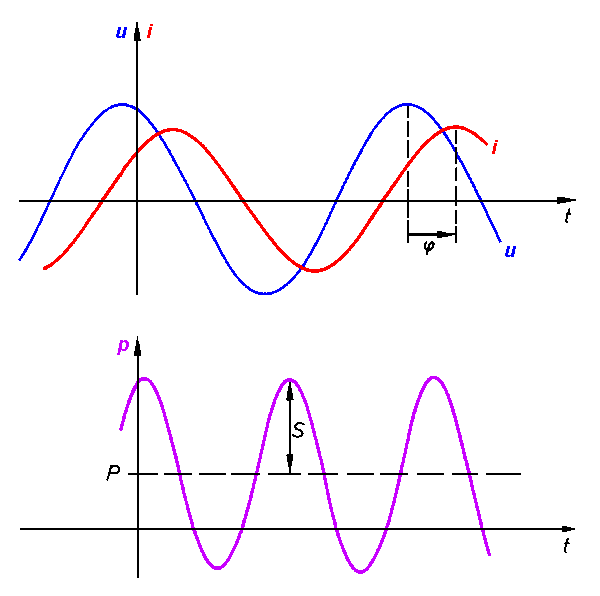
In this context, further parameters of the mains system and its consumers are significant:
- apparent power S
- reactive power Q
- power factor cos φ
The KL3403 determines the following values:
- active power P
- effective voltage U
- effective current I
From these values, the required parameters can be calculated:
- apparent power:

- reactive power:

- Power factor:

Sign for power measurement
The sign of the active power P and of the power factor cos φ provide about information the direction of the energy flow. A positive sign indicates the motor mode, a negative sign indicates generator mode.
In addition, the sign of the reactive power Q indicates the direction of the phase shift between current and voltage. The diagram Four-quadrant representation of active/reactive power in motor and generator mode illustrates this. In motor mode (quadrant I & IV) a positive reactive power indicates an inductive load, a negative reactive power indicates a capacitive load. In generator mode (quadrant II & III), an inductive acting generator is indicated by a positive reactive power, a capacitive acting generator by a negative reactive power.
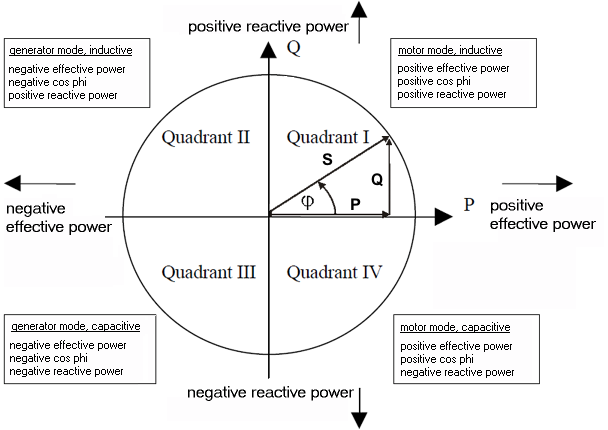
Peak current measurement
A distinction has to be made between the peak instantaneous value and the peak rms value. The peak rms value always refers to the peak value within the specified measuring interval.
Frequency measurement
The KL3403 can measure the frequency of the input signals at the voltage circuits (L1, L2, L3). The measurement takes 5 seconds (measuring interval).
Measuring error
Frequency | < 70 Hz | ≥ 70 Hz | ≥ 75 Hz | ≥ 80 Hz | ≥ 90 Hz | ≥ 100 Hz |
Measuring error | < 0.0 % | < 0.2 % | < 0.5 % | < 1.5 % | < 2.0 % | < 3.0 % |